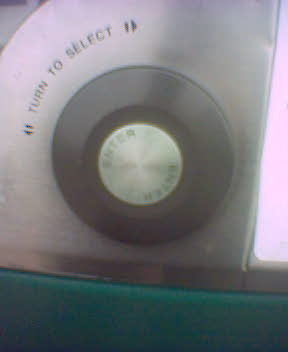The demise of Hypercard from Apple’s support pages has not gone unnoticed, it seems; it made Slashdot, and Dan Hill reminisced about his experiences with it during his degree.
I too have fond memories of Hypercard. My school, unusually, had a computer room full of Macs (the first five Mac Pluses being supplanted with Classics, the odd LC, and by the time I left the senior school, iMacs left right and centre. We still ran the junior school server from a Mac Plus with 40mb hard disk in 1995…). As such, Hypercard came on everything. Some of the smart older kids started investigating it. Many had been exposed to Hypercard without knowing it; the popular edutainment game Manhole was basically a Hypercard stack. And so, for the geeks who spent their lunch break in the IT room, Hypercard proved to be a most interesting diversion.
The really interesting bit was the scripting – the way that it was quite easy to turn a flick book of cards into a real program, using a scripting language very similar to real English. This was pretty easy for eleven and twelve year olds to get the hang of. One guy produced a really superb – I mean it – point and click adventure; it had stylish graphics, subtle use of scripting for puzzles and some stylish scripted animation. I was never that inventive, and to be honest, I was about ten when I was really fiddling with it, but I still came up with some interesting things. I produced a rudimentary notepad/database. Rudimentary is the operative word: it consisted of a scrolling text field. I think you could create new pages with text fields in and flick between them; you could definitely print by clicking on a button that ran a little bit of Applescript. Basic; almost useless. Still, I was only ten and it was very satisfying to produce something that had the impression of usefulness. It combined a lot of things, too – a little bit of UI design, a little bit of scripting. I was far more successful in Hypercard than I’d ever been in QBasic. My last project, I believe, was an elaboration of the basic textfield notepad; it was to be a PDA called PDQ, with notepad, database, perhaps even a calculator. Basic, maybe, but I was dreaming.
Hypercard made it easy for people to realise dreams; you didn’t even have to be able to script to come up with some moderately functional stacks. The fact it was free with every Mac was a wonderful bonus. I only ever used it at school, and dearly hoped for a PC equivalent. I believe there might have been one, but it didn’t have the same feel as squinting at the little Classic screen and trying to get flickbook animation to work.
Much to my own disappointment, I was never much of a programmer. I tried so hard; I can do algebraic stuff, use programs as little scripting languages to calculate things, and can even pseudocode simple algorithms, but I don’t think like a programmer. I haven’t tried in a while, to be honest; markup’s more my kind of scene, anyhow. Every time I settled down with my book on learning C, I got so far and then hit a brick wall. Perhaps I was too young, but even BASIC floored me some days. I may never program – not properly, anyhow – but Hypercard gave me and many others the chance to write useful stacks and programs with disconcerting ease, and gave us, for a few scant minutes and hours, the sensation of really being a programmer – of creating something digitally. I now get that joy from the web, and am getting back into programming through my love of markup. I wouldn’t be surprised if trying to align buttons neatly in Hypercard has anything to do with this.
